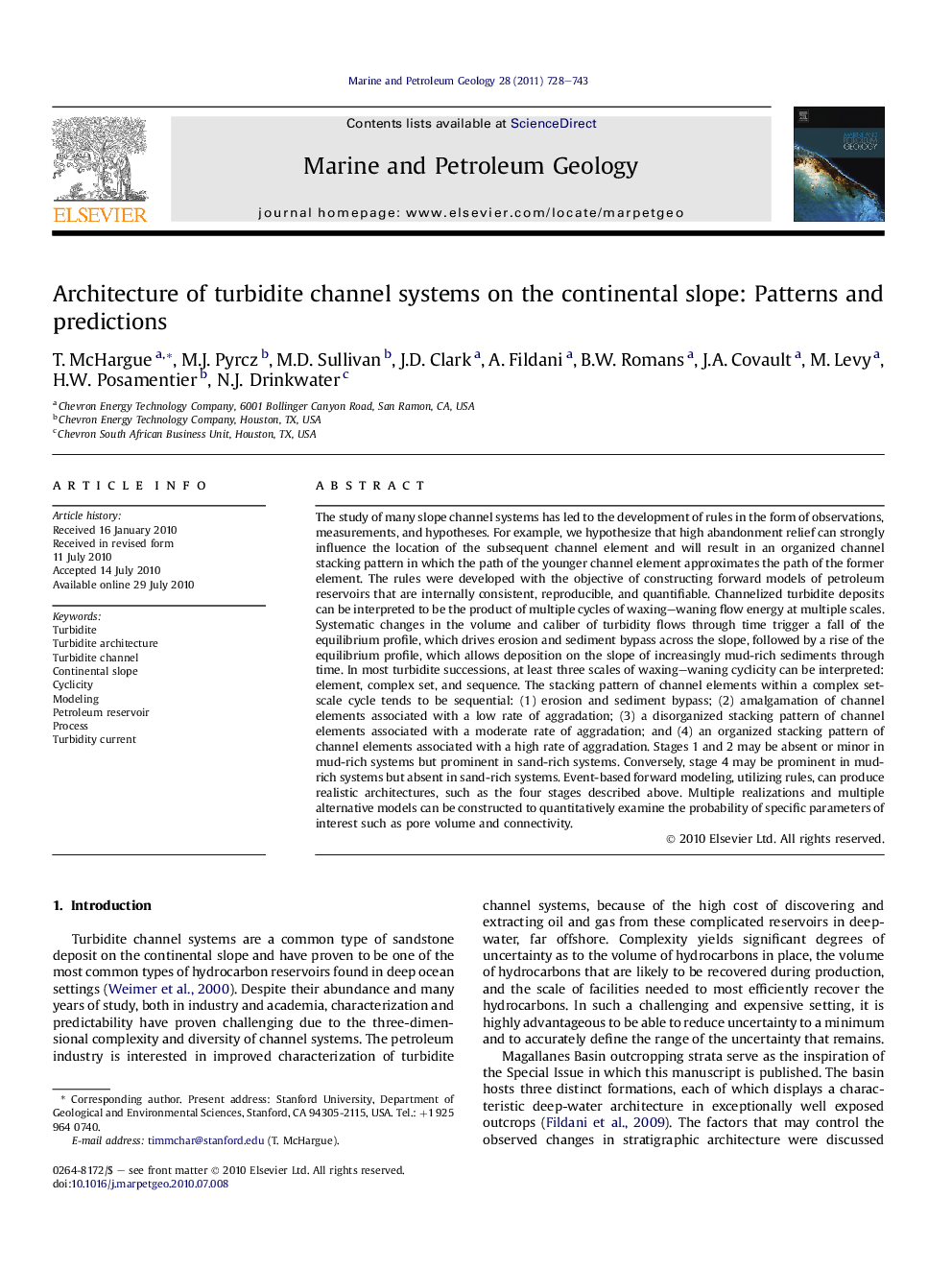| کد مقاله | کد نشریه | سال انتشار | مقاله انگلیسی | نسخه تمام متن |
|---|---|---|---|---|
| 4696071 | 1351654 | 2011 | 16 صفحه PDF | دانلود رایگان |

The study of many slope channel systems has led to the development of rules in the form of observations, measurements, and hypotheses. For example, we hypothesize that high abandonment relief can strongly influence the location of the subsequent channel element and will result in an organized channel stacking pattern in which the path of the younger channel element approximates the path of the former element. The rules were developed with the objective of constructing forward models of petroleum reservoirs that are internally consistent, reproducible, and quantifiable. Channelized turbidite deposits can be interpreted to be the product of multiple cycles of waxing–waning flow energy at multiple scales. Systematic changes in the volume and caliber of turbidity flows through time trigger a fall of the equilibrium profile, which drives erosion and sediment bypass across the slope, followed by a rise of the equilibrium profile, which allows deposition on the slope of increasingly mud-rich sediments through time. In most turbidite successions, at least three scales of waxing–waning cyclicity can be interpreted: element, complex set, and sequence. The stacking pattern of channel elements within a complex set-scale cycle tends to be sequential: (1) erosion and sediment bypass; (2) amalgamation of channel elements associated with a low rate of aggradation; (3) a disorganized stacking pattern of channel elements associated with a moderate rate of aggradation; and (4) an organized stacking pattern of channel elements associated with a high rate of aggradation. Stages 1 and 2 may be absent or minor in mud-rich systems but prominent in sand-rich systems. Conversely, stage 4 may be prominent in mud-rich systems but absent in sand-rich systems. Event-based forward modeling, utilizing rules, can produce realistic architectures, such as the four stages described above. Multiple realizations and multiple alternative models can be constructed to quantitatively examine the probability of specific parameters of interest such as pore volume and connectivity.
Journal: Marine and Petroleum Geology - Volume 28, Issue 3, March 2011, Pages 728–743